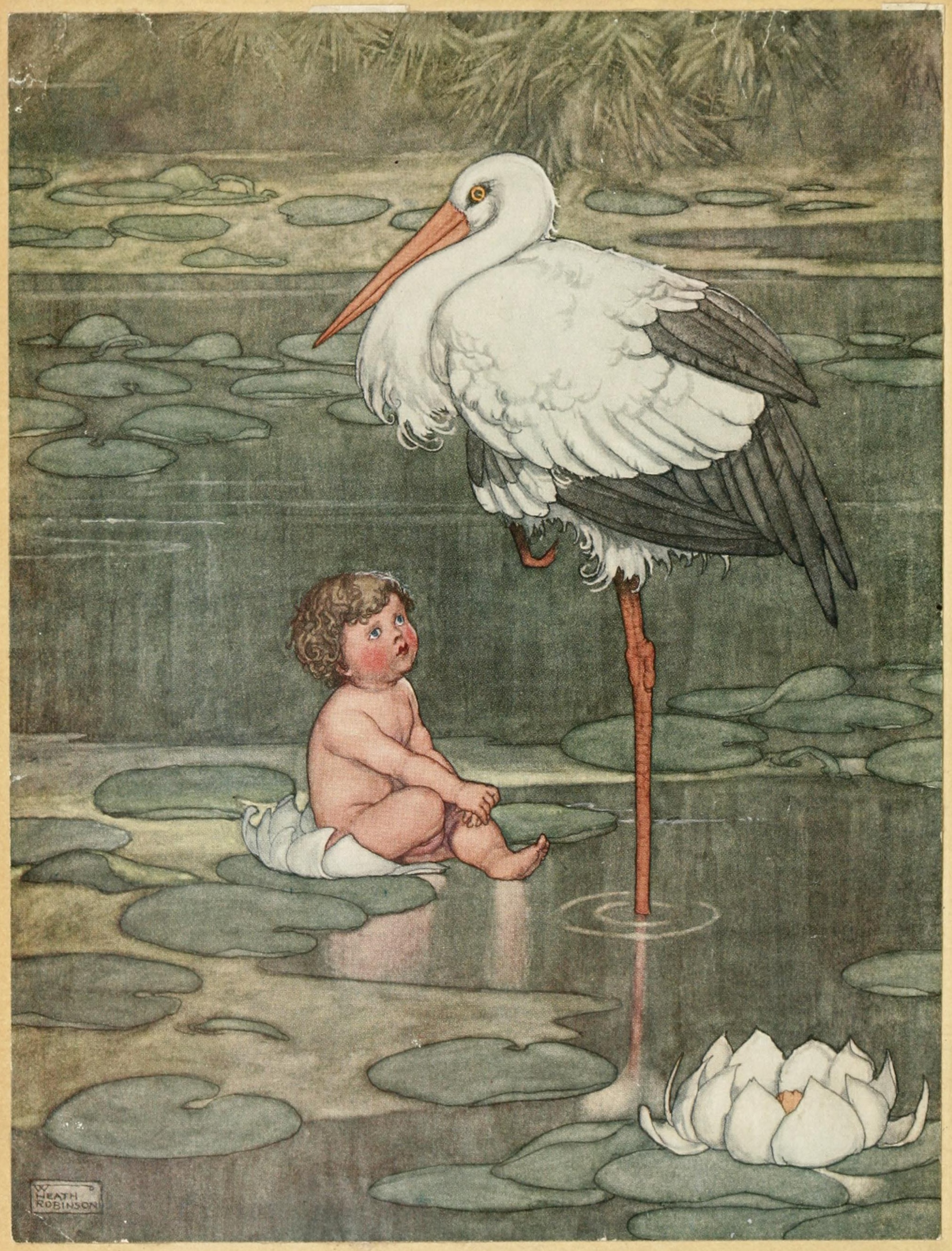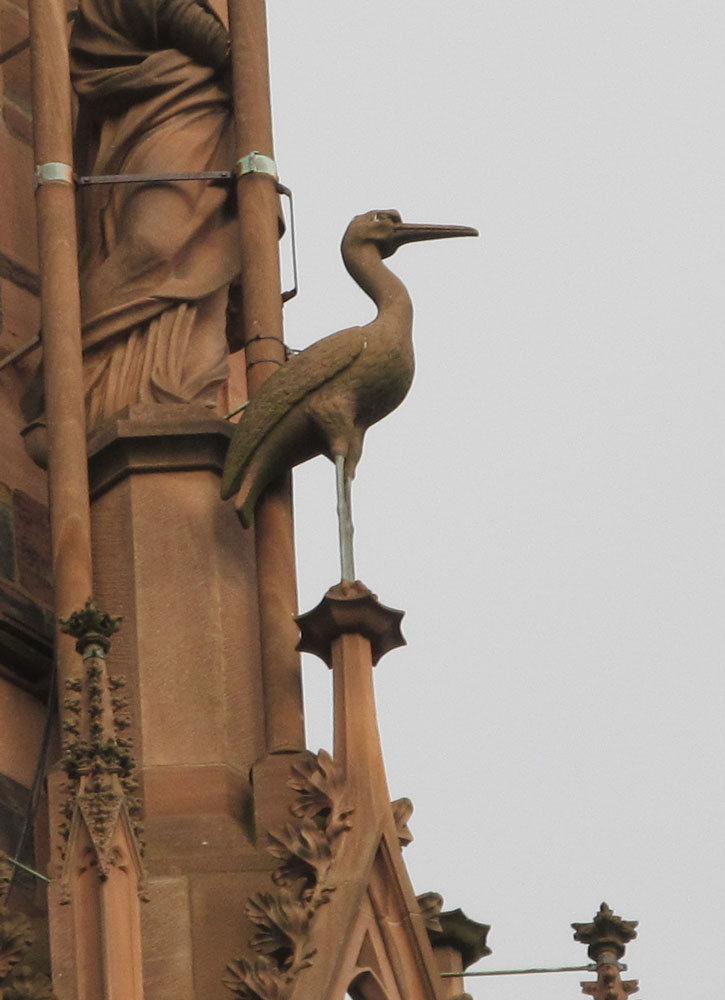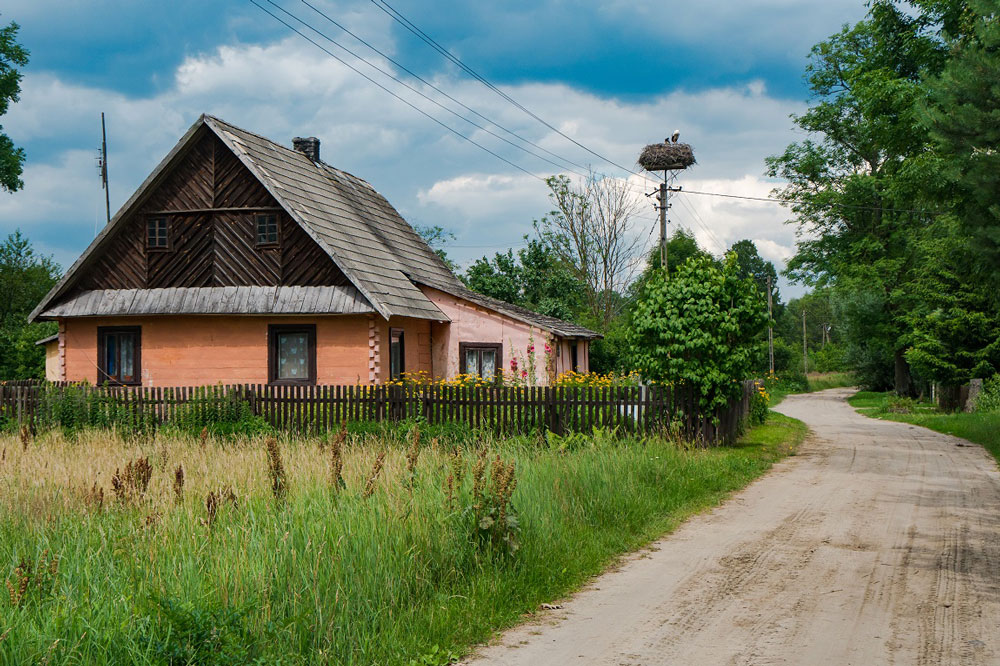The Stork
May 6th 2020, by Gabriel
Today I wanted to tell you a bit about our region’s totem: the stork. Everyone has known storks since childhood. Isn’t it the stork that delivers babies? In any case, many legends (or tales?) explain birth this way. And since the truth is much less romantic in my opinion, we will stick to that version, which we will look at in more details later on.
First, a few words about this beautiful bird that populates our plain from spring to autumn.
The white stork (ciconia ciconia) is a wading bird, widespread throughout Europe until the 19th century. Industrialization will lower its population and nowadays we find them especially to the east (Poland (50000), Ukraine (30000), Baltic countries (25000) …) and Spain (30000). France is far behind with a tiny thousand, and almost all of them nesting in Alsace. Note that if the stork is a symbol of Alsace, we do not have its monopoly. It is also, for example, a symbol of Poland, a country that hosts around 20% of the world’s population with more than fifty thousand baby deliverers. At the same time, “stork” and “Poland” rhyme in French (cigogne and Pologne) so there must be a logic somewhere…
This beautiful bird can be 100 to 125 cm high, its wingspan ranges from 190 to 215 cm, and its weight between 2,2 and 4,4kg. The storks live as a couple and are very faithful, they usually do not get a divorce and they return each year to the same place to rebuild their nest. A necessarily big nest, given the size of the animal. It measures on average 120 to 140 cm in diameter, but the most incredible thing is its weight: 500kg on average! And the record is attributed to one nest found on the Porte de France in Turckheim: 1,2 tons!!! You’ll admit they are no pretenders…
Besides, if you want to see a stork’s nest live and direct (even with the confinement going on), follow this little link which will take you directly to Sarralbe, in Moselle: https://www.sarralbe.fr/webcam.html.
Hey come back! I’m not done telling you stuff yet! (we’ll take you there by car if you like 😉 ) Once the confinement is over, you can also go to the Parc de l’Orangerie in Strasbourg, where some families have decided to remain in a sedentary way, as their food does not disappear in winter (global warming has got to do with that).
Baby delivery
Now that we have described the animal in more details, let’s talk about its profession. As mentioned above, the stork has made delivery its job for a long time and its favorite package is the baby. So now I’m going to share with you my version of this legend. First, you should know that when people die, their souls rise to the sky and when the clouds end up crying, souls accompany the rain to the ground, and even much lower …
Everyone knows of course that under our beautiful Strasbourg cathedral is an underground lake, this is where souls end their downward race. You may also know that in the cathedral, along the south aisle of the nave, there was a well: the “Kindelsbrunnen” (children’s well) or “Taufbrunnen” (baptismal fountain). This well had a very interesting feature, because it led directly to the lake in question. In there was a small boat, nobody on board, even if you could hear the noise of the oars…
In fact, there was a smuggler on board, but he was invisible to the living (it was a deceased man who told me so during a séance, I promise!). He looks like an old man with a white beard and a red cape. It reminds me of another old man who rides in a sleigh and delivers some other kind of packages, but that’s not the point here! Back to our business! I promise, it’s coming up soon.
Aboard his boat is his selection of souls, those who are waiting to become future children! And it is when the stork enters the cathedral that the old man passes the little babies through the well. Our dear stork can therefore deliver babies anywhere in the world!
The thing to remember from this story is (and obviously there is a consensus about it within the scientific community): all babies in the world come from Strasbourg! 😀
Indeed, when we think about it, what could be more natural than to be born in the heart of what we call with affection “Mommy”, right?
Now, that’s mind-blowing, isn’t it? But that’s not all, I must tell you a little more about this aforementioned old man. He is an Alsatian of course and, to be chosen, the souls hail him with a very simple and direct: “Hol mich! ” (take me). I very easily infer from that that everyone, at some point or other, also knew how to speak our dialect, otherwise they would not have been chosen, obviously… Besides, storks clatter in Alsatian, it is well known, and it can be heard in their slightly gruff accent.
A bit more seriously
Well, let us indeed be a little more serious. This legend and those similar to it originate in Germanic culture with the goddess Holda.
Goddess of love and fertility, she personifies the productive forces of the earth. She would send the souls of the deceased back to the living world by reincarnating them. The Germans make the stork her messenger and, as an emissary, she would be responsible for bringing babies to parents who have expressed such desire. After placing an order, the expectant mother must put a few pieces of sugar on the windowsill to attract the stork. The bird will then seek the toddler from a source or a pond, where the elves bring back from the depths of the earth the souls fallen from the sky with the rain and reincarnated as newborns. It seems that the storks, frequenting the wetlands for their food needs, have thus replaced over time the elves, who were previously responsible for delivering babies. You will notice that these elves still exist in my version of the legend, embodied by the old man in the boat.
Here is a little poem by Jean-Frédéric Wentzel, a 19th century man from Wissembourg, in which he lets us understand the attractiveness of the stork:
Storick, Storick, stipper di Bein,
Bring de Mamme a Bubbela heim,
Eins wo hielt, eins wo lacht
Eins, wo ins Hafela macht.
Storick, Storick, stipper di Bein,
Bring m’r e Korb voll Wegga heim,
Bring fer mich oi eina mit.
Awer fer d’beesi Büewa nit.
(Stork, Stork, bend your legs
Bring mom a cute kid,
One that cries, one that laughs,
One that goes to the potty.
Stork, Stork, bend your legs,
Bring me a basket full of rolls,
One for you, one for me too,
But for bad boys none.)
Another story tells of a stork flying over the cross during the crucifixion of Jesus, becoming a symbol of resurrection and regeneration. This is why, even today, if a stork sets its nest above your house, it becomes your lucky charm for just about anything and everything: fertility and loyalty in the first place, but also wealth, health, lightning protection, blessing of the whole city where it has taken up residence, and so on and so forth! It is probably because the beautiful wader cleared the fields and swamps of snakes and other animals not too appreciated by the locals, that it was slowly but surely attributed all these qualities.
Anyway, the legend of the stork has spread today throughout France, Europe and the whole world! People all over the world know that it is the migratory bird that delivers babies.
Guardians of the cathedral
Having said that, I must admit that the storks are not seen every day in the cathedral. But on the facade of Mommy, there are always four of them watching us… They watch four characters in particular: the four horse riders of the west facade, just below the rose window. These riders are important kings and emperors in our local history (I will not dwell on this, if you want to know more, you will have to ask us during our Free Tours – I am a very mean person, I know), and if you look up a little above their heads, you will see the aforementioned four storks perched there.
In reality, as many animals like the dog, the crow or even the dolphin, the stork is considered a psychopomp animal. Yes, you will have learned a word today, you will shine when you go back to civilization… 😉
Basically, a psychopomp is a conductor of soul, which brings us back to what I “explained” before, and they would have been placed there to guide the souls of these dear kings to the afterlife.
It’s cute, it’s romantic, but it lacks fun in my opinion … So I’m going to share with you my interpretation, much more interesting and always without any hint of chauvinism, that goes without saying.
We notice here without difficulty that the stork, the totem of Alsace, is above the kings. The meaning of this presentation is obvious to me. It is not the king who oversees Alsace, but it is indeed, as indicated at the beginning of the chapter, the stork, and therefore Alsace which oversees kings, because as everyone knows, Alsace is well above all that!
Now you know a little more about one of Alsace’s 5Cs! (that is, in French: “Cathédrale” Cathedral, “Choucroute” Sauerkraut, “Cigogne” Stork, “Coiffe” Headdress, “Colombage” Half-timbering)









